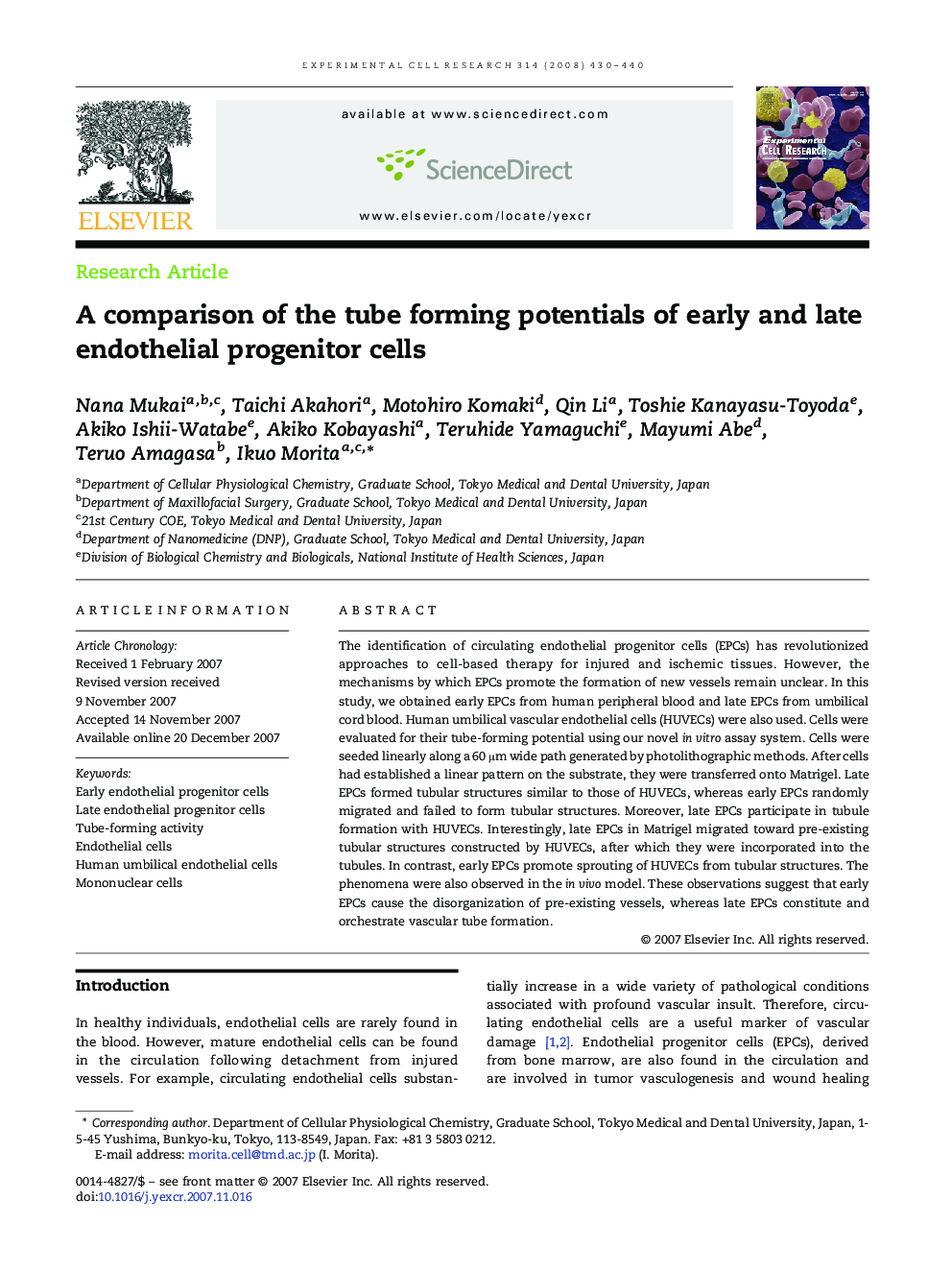| Article ID | Journal | Published Year | Pages | File Type |
|---|---|---|---|---|
| 2131619 | Experimental Cell Research | 2008 | 11 Pages |
The identification of circulating endothelial progenitor cells (EPCs) has revolutionized approaches to cell-based therapy for injured and ischemic tissues. However, the mechanisms by which EPCs promote the formation of new vessels remain unclear. In this study, we obtained early EPCs from human peripheral blood and late EPCs from umbilical cord blood. Human umbilical vascular endothelial cells (HUVECs) were also used. Cells were evaluated for their tube-forming potential using our novel in vitro assay system. Cells were seeded linearly along a 60 μm wide path generated by photolithographic methods. After cells had established a linear pattern on the substrate, they were transferred onto Matrigel. Late EPCs formed tubular structures similar to those of HUVECs, whereas early EPCs randomly migrated and failed to form tubular structures. Moreover, late EPCs participate in tubule formation with HUVECs. Interestingly, late EPCs in Matrigel migrated toward pre-existing tubular structures constructed by HUVECs, after which they were incorporated into the tubules. In contrast, early EPCs promote sprouting of HUVECs from tubular structures. The phenomena were also observed in the in vivo model. These observations suggest that early EPCs cause the disorganization of pre-existing vessels, whereas late EPCs constitute and orchestrate vascular tube formation.
